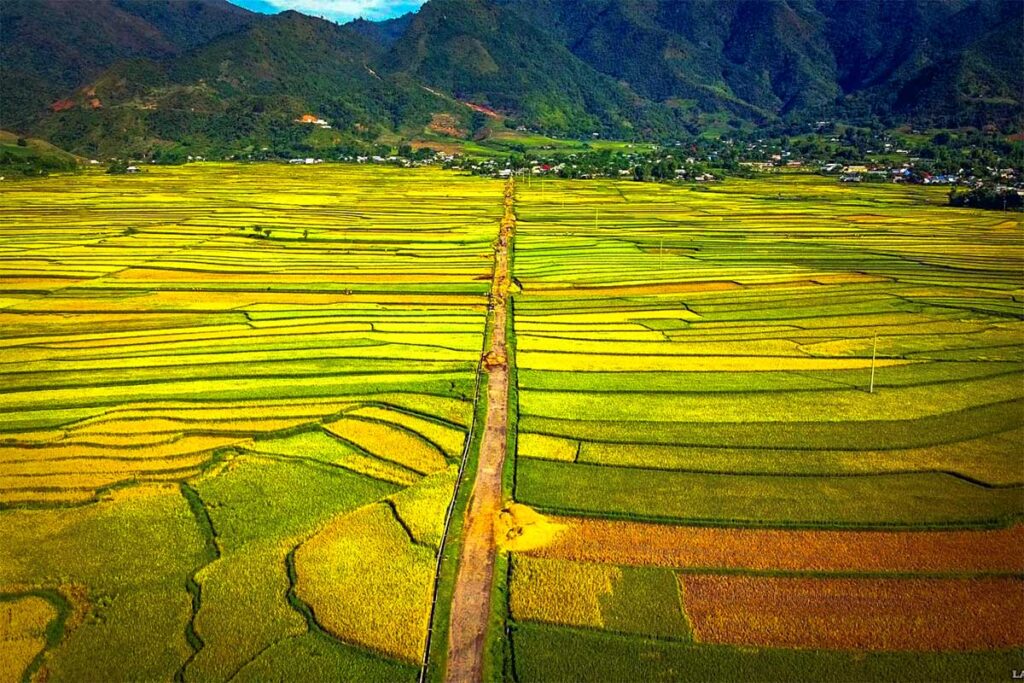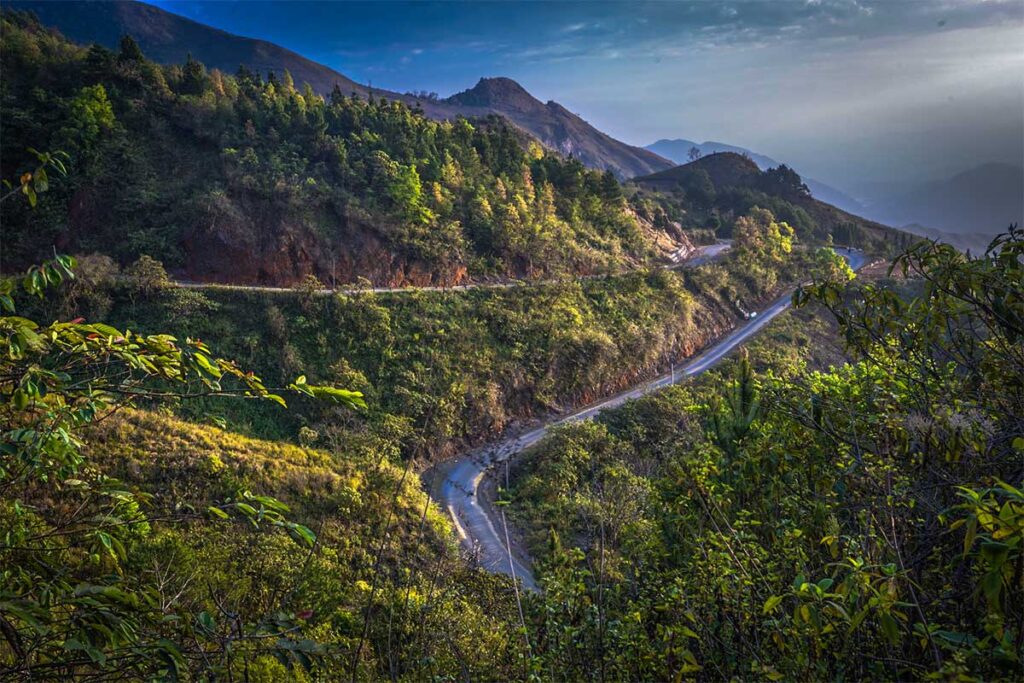What is Muong Than Like?
Muong Than is a wide, flat valley in Lai Chau Province, filled with rice fields that stretch as far as the eye can see. Surrounded by low mountains and open sky, it offers a sense of space and calm that’s hard to find elsewhere in the region. There’s no single viewpoint or famous photo spot—instead, the beauty comes from the vastness of the landscape itself.
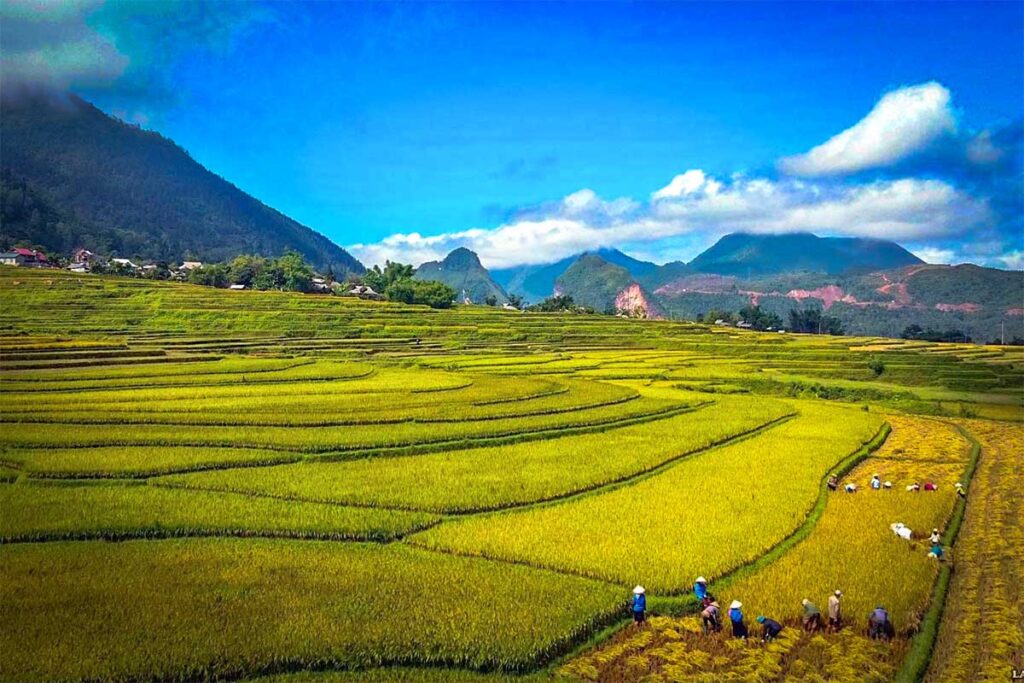
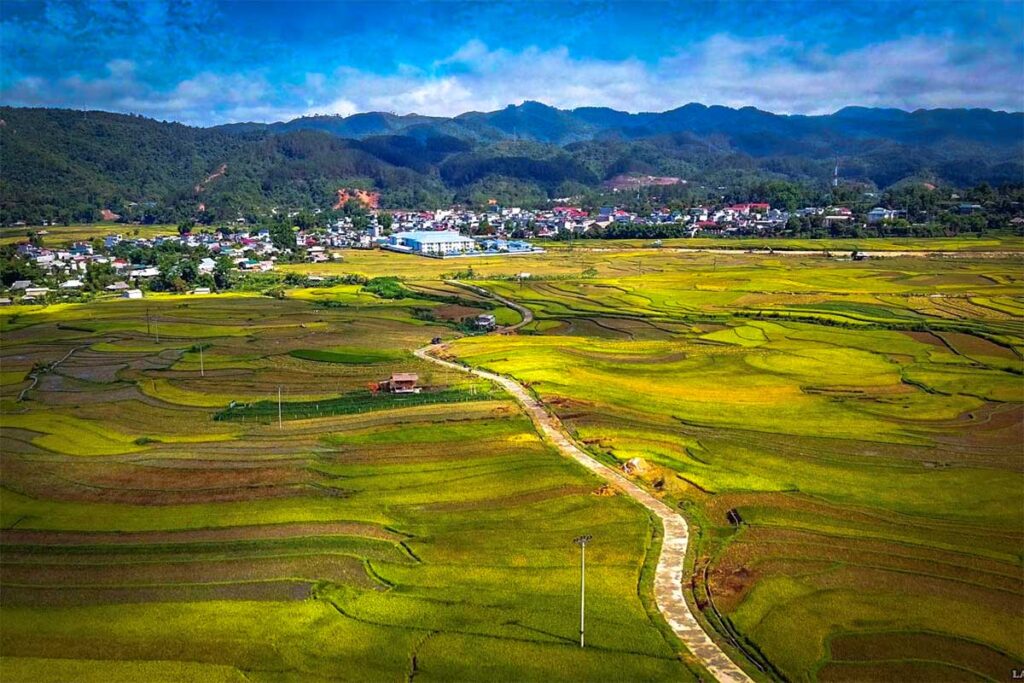
It’s known as one of the largest and most important rice fields in the Northwest, especially within local communities. It’s even mentioned in a traditional saying that ranks the region’s great valleys:
“First Muong Thanh, Second Muong Lo, Third Muong Than, Fourth Muong Tac.”
The valley is home to ethnic Thai communities, whose daily life revolves around rice farming and traditional brocade weaving. You’ll see stilt houses, buffalo grazing, and children flying kites—scenes that reflect the peaceful rhythm of rural life.
Muong Than isn’t a destination packed with tourist attractions. It’s a place to pass through slowly, take in the landscape, and experience a side of Vietnam that still feels untouched.
Where is Muong Than and How to get there?
Location
Muong Than is located in Than Uyen District, Lai Chau Province, in the northwest of Vietnam. The valley sits near the eastern edge of Hoang Lien National Park, about 2.5 hours southwest of Sapa town by road. It’s part of a broad mountainous landscape, surrounded by rice fields and Thai ethnic communities.
Getting there
From Sapa
Most travelers visit Muong Than as part of a scenic loop from Sapa, crossing over the stunning Tram Ton Pass—the highest mountain pass in Vietnam.
A popular route is: Sapa → Tram Ton Pass → Lai Chau → Than Uyen → return to Sapa via another road.
This loop is best done over two days or more, with plenty of scenic stops along the way.
Travel options include:
- Self-drive motorbike – for experienced riders looking for freedom and photo stops
- Easy Rider tour – ride on the back of a local motorbike guide
- Car with driver – the most comfortable option, especially in bad weather
Need a car or a full itinerary?
We offer private car rentals with drivers and fully organized trips through Lai Chau, Muong Than, and nearby regions like Sapa and Mu Cang Chai.
From Mu Cang Chai to Sapa
If you’re traveling from Mu Cang Chai to Sapa (or vice versa), you’ll pass directly through Muong Than. It lies along QL32, one of the main roads you use to drive between the two regions. This makes it easy to include Muong Than naturally in your itinerary without needing a separate detour.
Best time to visit Muong Than
To truly appreciate Muong Than, it’s essential to visit during the rice growing seasons. Outside these periods, the fields may be dry or bare, and the scenery far less impressive.
Rice season overview
Unlike higher-altitude areas like Sapa, Muong Than lies in a lower valley, allowing two rice harvests per year:
- First season: Planting in January–February, harvest in May
- Second season: Planting in June, harvest in August–September
What to expect
- Early season (watering time): Water is channeled into the fields, creating a stunning mirror-like effect as the terraces reflect the sky and surrounding mountains.
- Mid season: Fields turn a vibrant green as rice sprouts grow—lush and peaceful.
- Harvest season: The landscape glows golden yellow. This is the most photogenic time to visit, when the fields are at their peak beauty.
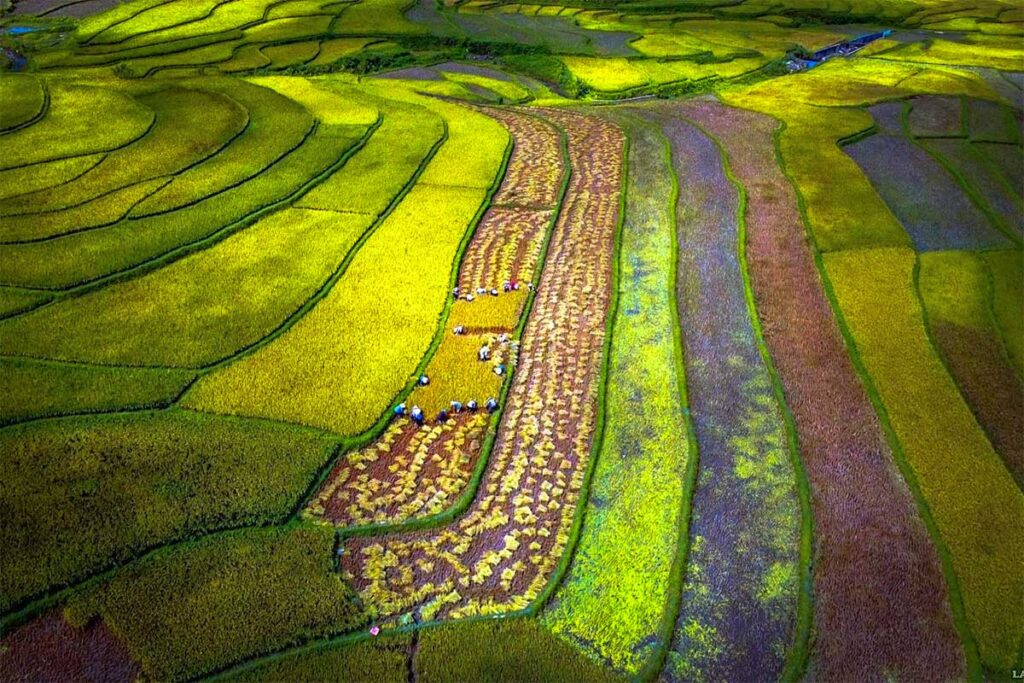
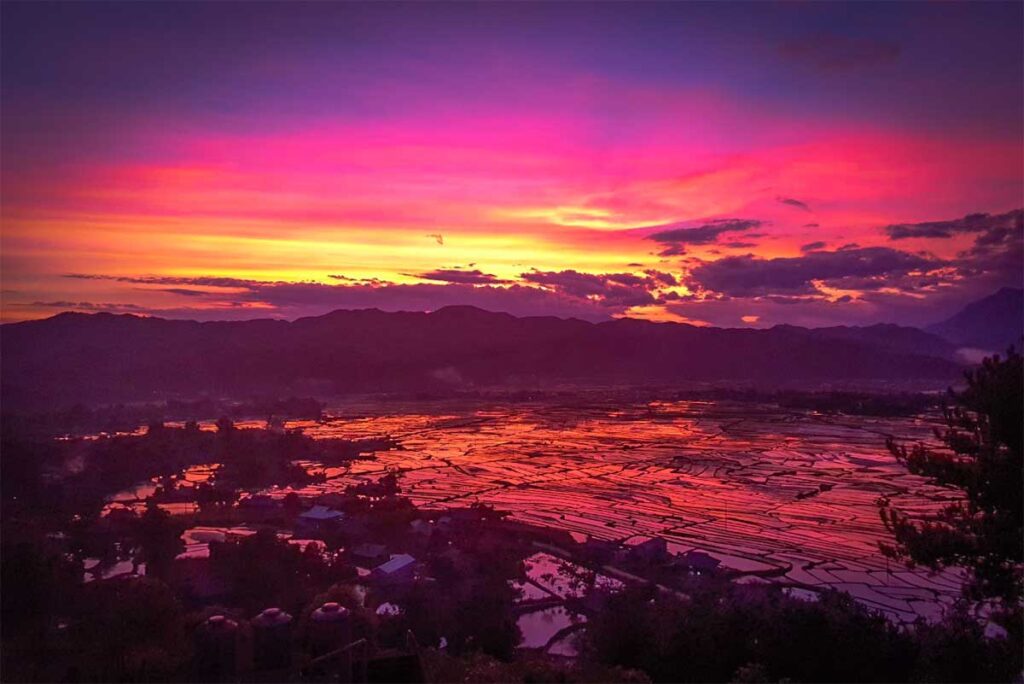
Visiting Muong Than
Muong Than is not a tourist destination in the traditional sense, but if you’re prepared, it makes for a rewarding and peaceful stop. This section gives you practical advice on how to explore the area, where to stay, and what to expect.
1. Scenic drive
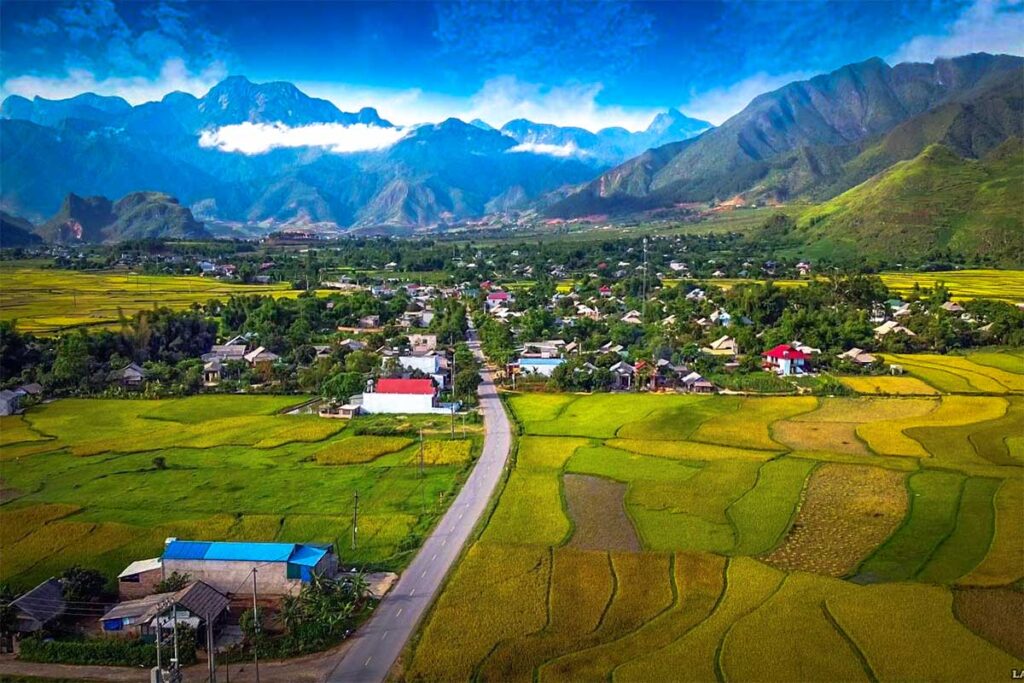
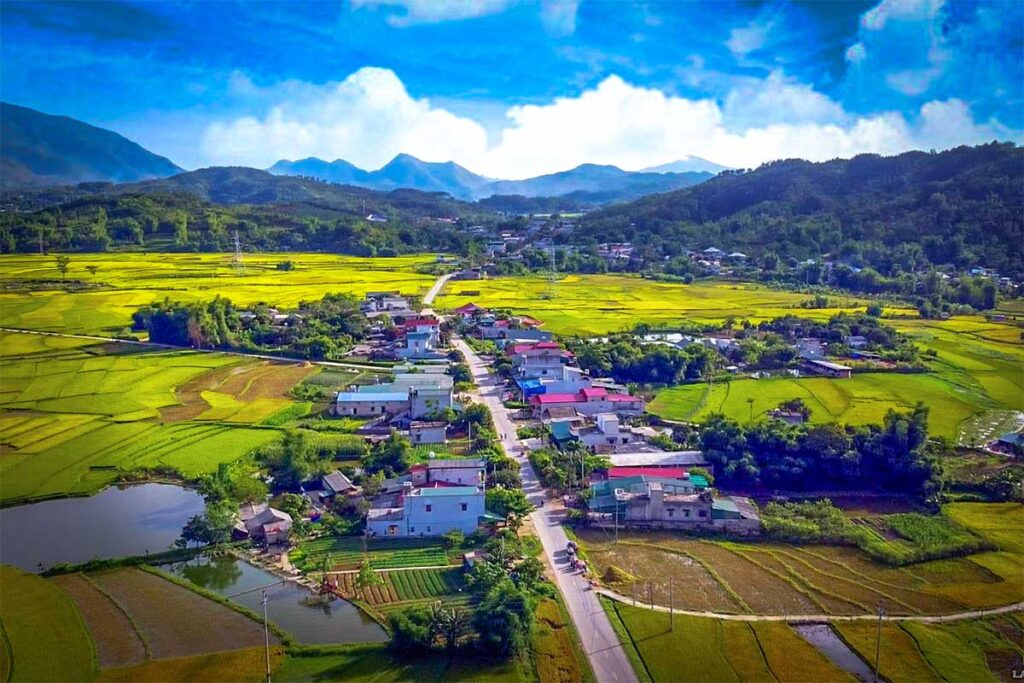
The best way to experience Muong Than is by simply driving through it. The main road (QL32) runs directly through the valley, offering constant views of open rice fields backed by mountain ridges. If you’re riding a motorbike, it’s worth exploring the smaller countryside roads that branch off the highway. These routes take you closer to daily rural life and allow for more spontaneous photo stops. Many travelers pass through Muong Than on the route between Sapa and Mu Cang Chai, making it a natural addition to a two- or three-day loop.
2. Viewpoint
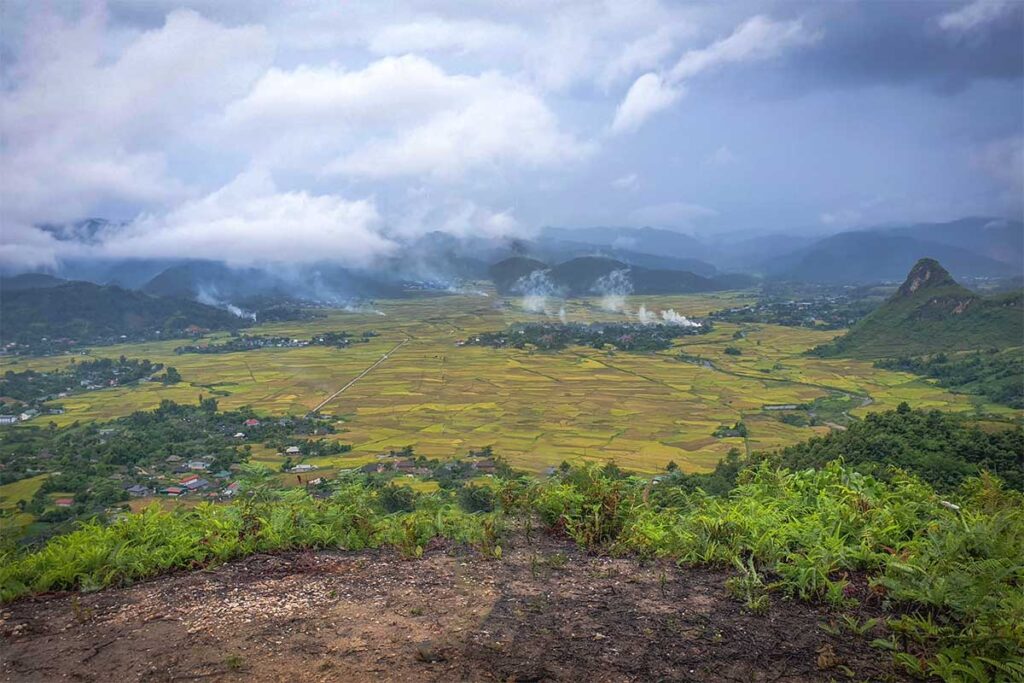
While Muong Than doesn’t have many developed tourist spots, there is one notable viewpoint on the eastern edge of the valley. Marked on Google Maps as Đệ nhất View Hua Than or Nhà văn hóa Bản Hua Than, it offers sweeping views over the rice fields. It’s especially beautiful during the golden season when the fields turn yellow before harvest. The viewpoint isn’t a formal attraction, but it’s easy to reach and well worth the short detour.
3. Accommodation in Muong Than
Although Muong Than feels remote, there are several basic accommodation options, mostly located along the main road. You’ll find small guesthouses and homestays, particularly in and around Than Uyen town. Don’t expect high-end amenities, but for a one-night stay, the comfort level is perfectly adequate. Staying overnight also gives you the chance to experience the area at a slower pace, with quieter mornings and golden-hour light over the valley.
4. Local facilities
Facilities in Muong Than are limited, but sufficient for short visits. You’ll find petrol stations, small local restaurants, and convenience shops along QL32. Once you leave the main road, services become scarce—so it’s a good idea to stock up on water and snacks before venturing too far into the countryside.
